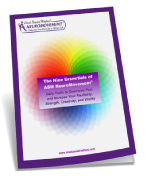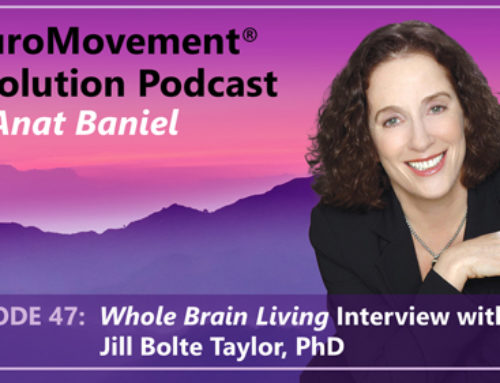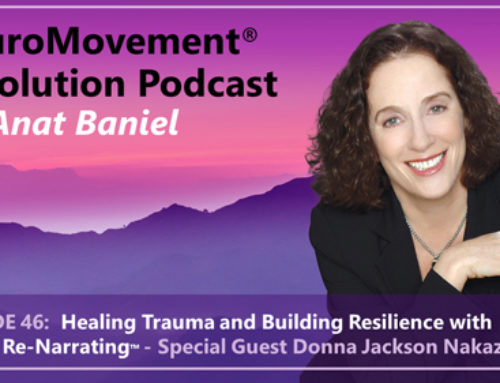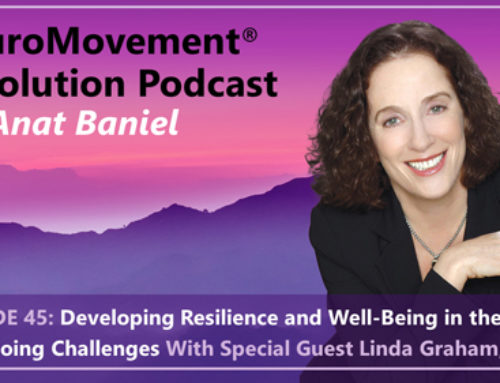Dynamic Sitting: What Doctors Don’t Tell You
Third Article in a Whole Body Fitness Series by Anat Baniel
I have been writing a series of articles for the magazine What Doctors Don’t Tell You. Following are highlights from the third article in this whole body fitness series. If you want to read the previous articles, which were published in the May and June 2016 issues in the UK, click on the following links:
Easing Into Fitness
Powering Up the Middle
 Below are some highlights and a link to the full article: Dynamic Sitting (how to keep your brain and body awake while sitting). There are three NeuroMovement® lessons in the article that I encourage you to try!
Below are some highlights and a link to the full article: Dynamic Sitting (how to keep your brain and body awake while sitting). There are three NeuroMovement® lessons in the article that I encourage you to try!
The human body is built for motion.
Our bodies have more than 640 named muscles, 206 bones, and 360 joints, which creates an enormous number of possible configurations of movement. More and more it is being recognized that some of the most potent mechanisms, at the root cause of chronic disease, are caused by inactivity, because the body needs frequent muscular activity in order to optimize blood flow, hormonal secretions, and the millions of other functions that keep us healthy.
Even standing for many hours with little movement, including standing at a work station, can stress the body in ways that can have negative consequences.
It’s not the position, such as sitting or standing, but rather the lack of motion and variability of movement that is the real culprit.
The necessary muscular activity, including while we sit, does not happen on the muscular level alone.
It is the brain, with its 100 billion neurons, an estimated trillion glial cells, and trillions of connections between neurons that organizes and executes all movement.
It is the wakefulness of the brain that determines, to a great extent, the level of activity of the muscles, and thus our vitality, health, and wellness.
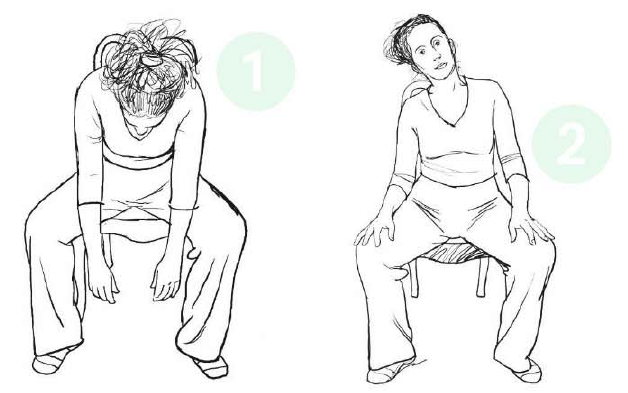 For sitting to be healthy, it needs to be what I call Dynamic Sitting.
For sitting to be healthy, it needs to be what I call Dynamic Sitting.
The brain has to stay awake and manage the whole body as we sit, whatever our activity may be.
It is not about doing large movements, or stretching; it’s about creating a fuller map of the body in the brain while in a sitting position. This leads to an ongoing sense of presence and increased well-being.
The three NeuroMovement® lessons in this article promote increased differentiation and greater representation of the body in the brain.
You can do these lessons at work or at home, at your desk, or away from it. The first lesson is done in a standing position and the second and third lessons are done while sitting.
REMEMBER: Do the movements gently, slowly, with minimum force, always seeking comfort, and—very importantly—pay close attention to what you feel in yourself as you move. This helps to wake up your brain and gain enhanced freedom of movement, greater ease in sitting, reduced aches and pain, and enhanced well-being, both physically and mentally.
Click here to read the full article Dynamic Sitting in What Doctors Don’t Tell You.
What Doctors Don’t Tell You
What Doctors Don’t Tell You (WDDTY) is a monthly magazine which publishes the latest healthcare news, alongside information on complementary therapies and alternative medicines, with a host of features and stories written by leading experts and our highly-respected regular contributors.
WDDTY began as a newsletter, with the first issue being published at the end of 1989 by best-selling author Lynne McTaggart and her husband, former Financial Times journalist Bryan Hubbard. Since then, it has gone from strength-to-strength thanks to our ever-growing number of passionate fans, and is now the largest magazine of its kind in the UK, sold in 14 countries worldwide (including the US).
Learn More about What Doctors Don’t Tell You: www.wddty.com.
Have you been trying the NeuroMovement® lessons in these series? I’d love to hear about your experiences. Please share your feedback with us on Facebook at www.facebook.com/anatbanielmethod.


